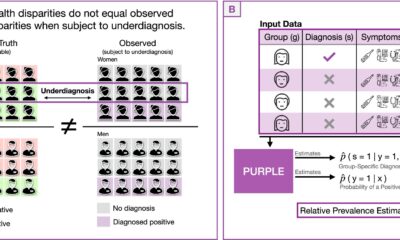Finance
The Prisoner’s Dilemma: A Simple Model of War

Economic models of cooperation and conflict are often based on the Prisoner’s Dilemma (PD) from game theory. As simple as this model is, it helps us understand whether or not a war will be fought, where “fought” involves escalation steps through retaliation – the current situation between the government of Israel and the government of Iran.
Suppose two countries are each ruled by their respective rulers, S and R. (In the simplest model, it may not matter who the ruler is or whether it is an individual or a group.) Each ruler is faced with the alternative: fighting with the other or not. By definition of a PD, each ruler prefers no war, that is, no infighting; let’s give each ruler a utility index of 2 and 3 for a fighting and non-fighting situation respectively. A higher utility number represents a more preferable situation (a situation with higher “utility”). However, any ruler would still prefer to fight if he is the only one doing it and the other chickens out; this means a utility number of 4 for that situation, the most preferred option for each of these situations. The worst alternative from any player’s perspective is to be the ‘sucker’, the pacifist who is ultimately defeated; the utility index is therefore 1 for the non-fighter in this situation.
No cardinal meaning should be attached to these utility numbers: they represent only the rankings of different situations. Rank 4 means only the most preferred situation, and 1 the least preferred situation, with 3 and 2 in between. A situation that is less desirable may simply be less miserable, with a smaller net loss.
This setup is represented by the PD payoff matrix below. For our two players we have four possible combinations or situations of “FIGHT” or “NO FIGHT”; each cell, marked A through D, represents one of these combinations. The “payouts” can be sums of money; here these are our utility rankings, which we assume are the same for the two players. The first number in a cell indicates the ranking of that situation for S (the line player, blue in my diagram) given R’s corresponding (column) choice. The second number in the cell indicates the ranking of that situation for R ( the column player, red in my diagram) given S’s corresponding (row) choice. For example, cell B tells us that if S doesn’t fight but R does, the latter gets the most preferred situation, while S is the loser and his worst possible outcome ( defeated or severely disabled). In cell C, S and R switch places as the loser (R) and the most satisfied (S). The player who exploits the sucker is called a ‘free rider’: the bellicist gets a free ride, to the detriment of the pacifist. Both S and R would rather end up in cell A than cell D, but the logic of a PD pushes them to the latter.
The reason is easy to see. Consider S’s choices. If R decides to fight, S must do the same (cell D), otherwise he becomes the sucker and gets an advantage of 1 instead of 2. But if R decides not to fight, S must fight anyway because then he gets an advantage. utility of 4 instead of 3. Whatever R will do, it is in S’s interest to fight; it is his ‘dominant strategy’. And R makes the same argument for himself. So both will fight and the system will end up in Cell D. (I will provide a brief additional explanation about the PD my review of Anthony de Jasay’s Social contract, free ride in the spring issue of Regulation.)
This simple model explains many events in the real world. Once a ruler views his interaction with another as a PD game, he has an incentive to fight (attack or retaliate). The ruled do not necessarily all have the same interest, but nationalist propaganda can lead them to an opposing belief. One way to avoid war is to change some of the payoffs in the ruler’s matrix to adjust his incentives. For example, if S or R realizes that, given the wealth he may lose or the military capabilities of the other—for example, if war threatens his own power—war would be too expensive. The preference indices will change in the matrix; try 4.4 in cell A and 3.3 in cell D, with 2.1 and 1.2 in the other diagonal. New incentives will have eliminated the PD nature of the game.
Another way to stop the automatic drift towards Cell D is to make the two players realize that, rather than a one-off game, they are engaged in repeated interactions in which cooperation – especially through trading – will make Cell A more profitable then a free cell. drive several laps. However, this path will likely be inaccessible if S or R are autocratic rulers, who personally do not benefit from trade and individual freedom as much as ordinary people. The possibility of turning a PD conflict game into a repeated cooperative game was brilliantly explained by political scientist Robert Axelrod in his 1984 book. The evolution of collaboration (Basic Books, 1984).
Like all models, this hides some complexities of the world. It does not explicitly include deterrence, which is essential to prevent war once either player considers the game a PD. But if deterrence has not worked – they have attacked – the question is whether a counterattack, and what kind, will have a better deterrent effect or will simply be another step in mutual retaliation, that is, open war.
In the current situation in the Middle East, religion on the part of Iran’s rulers only makes matters worse by counteracting rational considerations of military potential. Thus, preferences will likely differ from a PD matrix. “When you shot arrows at the enemies, you did not shoot; God did that before,” goes a saying among Iranian radical fanatics (quoted in “Iranians fear their fragile regime will drag them into war,” The economist, April 15, 2024). You can’t (always) lose when God is on your side.

God or Allah shoots the arrow, by Pierre Lemieux and DALL-E













